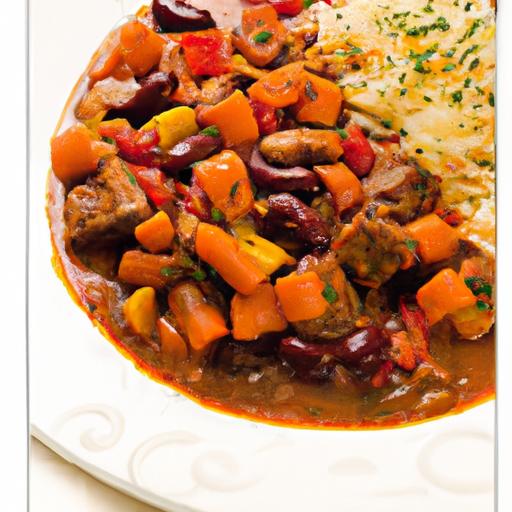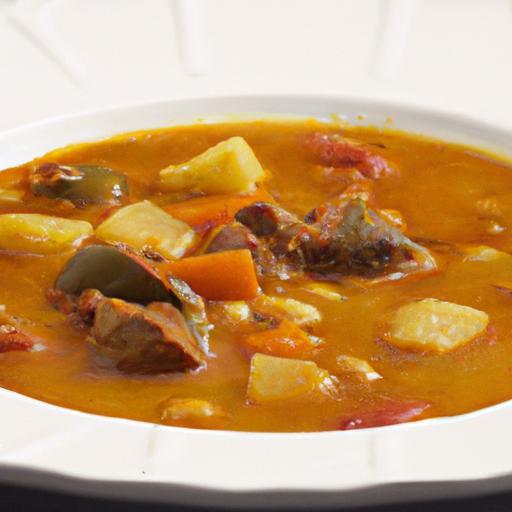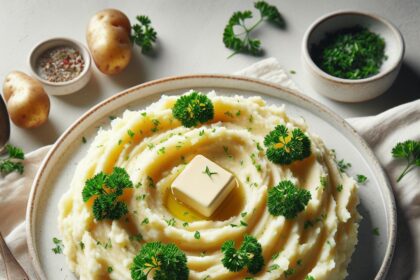There’s nothing quite as comforting as the aroma of a slow-cooked meal simmering gently throughout the day. But what happens when that savory anticipation is suddenly overshadowed by an unexpected salty bite? Whether it’s a sprinkle gone rogue or a surprise from stubborn ingredients, salty slow cooker meals can turn a cozy dinner into a culinary conundrum. Fear not-before you toss that pot aside or drown your dish in water, there are quick and clever fixes to reclaim your meal’s balance. Let’s dive into the causes behind the salty slip-up and explore how to rescue your slow cooker favorites with ease and confidence.
When slow cooker meals turn salty, it’s often a challenge to salvage the dish without losing precious cooking time or ingredients. With the long, slow simmering process, flavors intensify, and salt can quickly overpower the delicate balance of your recipe. Understanding why this happens and mastering quick fixes can transform your slow cooker experience from frustration to foodie triumph.
Prep and Cook Time
Preparation: 15 minutes | Cook Time: 4-6 hours (low setting)
Yield
Serves 6 generously
Difficulty Level
Medium – Perfect for home cooks comfortable with slow cooker basics and ready to elevate flavor control
Ingredients
- 2 lbs boneless chicken thighs, trimmed and patted dry
- 1 cup low-sodium chicken broth
- 1 medium onion, finely chopped
- 3 cloves garlic, minced
- 1 cup diced tomatoes, no salt added
- 1 tbsp fresh lemon juice
- 2 tsp smoked paprika
- 1 tsp black pepper
- 1 tbsp brown sugar
- ½ tsp cayenne pepper (optional)
- 2 cups chopped vegetables (carrots, celery, bell pepper)
- 1 tbsp olive oil
- Fresh herbs for garnish: parsley or cilantro
Instructions
- Brown the chicken: Heat olive oil in a skillet over medium-high heat. Sear chicken thighs until golden brown on both sides, about 3 minutes per side. This adds depth without extra salt.
- Prepare the base: Place onions, garlic, and chopped vegetables at the bottom of the slow cooker to form a natural flavor bed without seasoning.
- Add liquids and spices: Pour in the low-sodium chicken broth and diced tomatoes. Stir in smoked paprika, black pepper, brown sugar, and cayenne pepper if using.
- Layer the chicken: Nestle browned chicken thighs atop the vegetable mixture, avoiding direct contact with spices to allow gradual seasoning.
- Monitor salt levels mid-cook: After 2 hours at low, gently stir and taste the broth. If the saltiness creeps up, add an unsalted ingredient like a peeled potato or extra vegetables to absorb excess salt without starting over.
- Adjust liquid: If flavors intensify too much, carefully add a splash of unsalted broth or water to dilute, keeping texture intact.
- Finish with acid: In the last 15 minutes, stir in fresh lemon juice to brighten flavors and mask lingering saltiness.
- Serve with garnish: Sprinkle chopped fresh herbs just before serving to welcome freshness and balance.
Tips for Success
- Prevent over-salting: Always start with low-sodium broths and unsalted canned goods.
- Balance mid-cook: Incorporate neutral starches like rice or peeled potatoes early, which absorb excess salt as your meal simmers.
- Quick post-cook fixes: If the dish finishes too salty, serve over plain rice, mashed potatoes, or toss with unsalted greens to dilute the salt impact.
- Smart swaps: Replace salty soy sauces or broths with coconut aminos or homemade stocks for cleaner taste and controllable salt.
- Make ahead: Slow cooker meals often taste better the next day as flavors mellow; refrigerating can sometimes reduce perceived salt intensity.
Serving Suggestions
Present this comforting slow cooker chicken atop fluffy jasmine rice or a warm bed of creamy mashed cauliflower. Garnish with vibrant sprigs of fresh parsley or cilantro and a light drizzle of olive oil for gloss. A side of crusty, unsalted bread helps balance the flavor with smooth texture, while a simple green salad with a lemon vinaigrette refreshes the palate.

| Nutrient | Per Serving |
|---|---|
| Calories | 320 kcal |
| Protein | 35 g |
| Carbohydrates | 10 g |
| Fat | 12 g |
For deeper insights into flavor balancing and slow cooking tips, explore our comprehensive guide to fixing slow cooker meals. Additionally, the Food Network’s expert tips offer excellent advice on reducing saltiness after cooking.
Q&A
Q&A: When Slow Cooker Meals Turn Salty – How to Fix It Fast
Q1: Why does my slow cooker meal turn out saltier than expected?
A1: Slow cookers intensify flavors over time, and salt is no exception! As the dish simmers gently for hours, water evaporates and the salt becomes more concentrated. Plus, some ingredients-like broth, soy sauce, or canned goods-already have sodium, which adds up.
Q2: Can I fix a salty slow cooker meal without starting over?
A2: Absolutely! There are quick and clever tricks to rescue your dish without tossing it all away. Think of these as your salty-situation first aid.
Q3: What are the fastest ways to reduce saltiness in a slow cooker meal?
A3: Here are your go-to moves:
- Add Bulk: Throw in more unsalted ingredients like chopped potatoes, rice, or veggies to soak up excess salt.
- Dilute: Stir in unsalted broth, water, or coconut milk to tone down saltiness and stretch the dish.
- Include Acid: A splash of vinegar or lemon juice can balance out saltiness with bright, tangy notes.
- Sweeten It: A pinch of sugar, honey, or balsamic glaze adds a counterpoint to salt’s sharpness.
Q4: Should I adjust salt when cooking in a slow cooker from the start?
A4: Yes! It’s wise to start with less salt than usual. Slow cookers concentrate flavors, so add a pinch less salt initially. You can always season to taste near the end of cooking.
Q5: What if the saltiness persists after trying fixes?
A5: Consider serving your dish alongside neutral sides-like steamed rice, crusty bread, or plain pasta-that help balance the bite. Think of your bread as a salt firewall, protecting your palate.
Q6: Can these tips work for other types of dishes, like soups or stews?
A6: Definitely! These tricks are universal for any slowly simmered meal where salt concentration becomes an issue. The principles of dilution, balancing flavors, and bulk addition apply across the board.
Q7: Are there slow cooker-friendly ingredients that help prevent saltiness?
A7: Unsalted broths, fresh veggies, and rinsed canned beans are great choices. Also, keep salty condiments on the side to add only if necessary. This way, you control salt more precisely.
Q8: How do I taste-test a slow cooker meal without over-salting?
A8: Use a clean spoon to sample throughout cooking, especially in the last hour. Taste small spoonfuls slowly and avoid adding salt unless you’re sure it’s needed. Remember, slow cookers build flavor gradually!
With these tips in your cooking toolkit, salty slow cooker mishaps don’t stand a chance. Keep calm, adjust smartly, and savor every bite – even when the salt tries to sneak in too strong!
Insights and Conclusions
In the world of slow cooking, patience is a virtue-but an overly salty stew? That’s a pitfall no one wants. Luckily, when your slow cooker meals tip the scale toward salty, quick fixes are well within reach. From the humble potato trick to balancing acts with dairy or acidity, a salty mishap doesn’t have to mean the end of dinner. Armed with these speedy solutions and a dash of kitchen savvy, you can turn back the clock on salt overload and keep your slow cooker creations deliciously on point. So next time your meal veers into salty territory, relax-rescue is just a few clever steps away.








